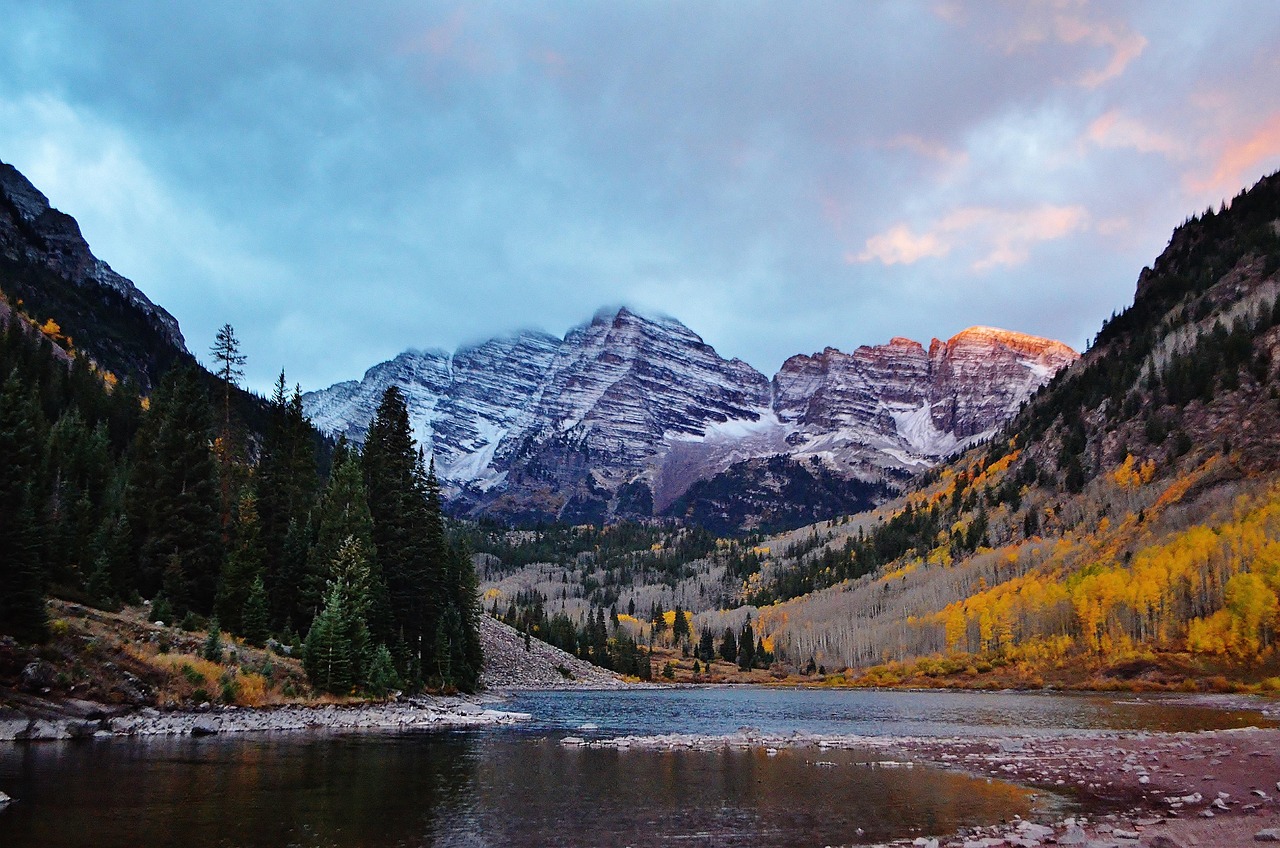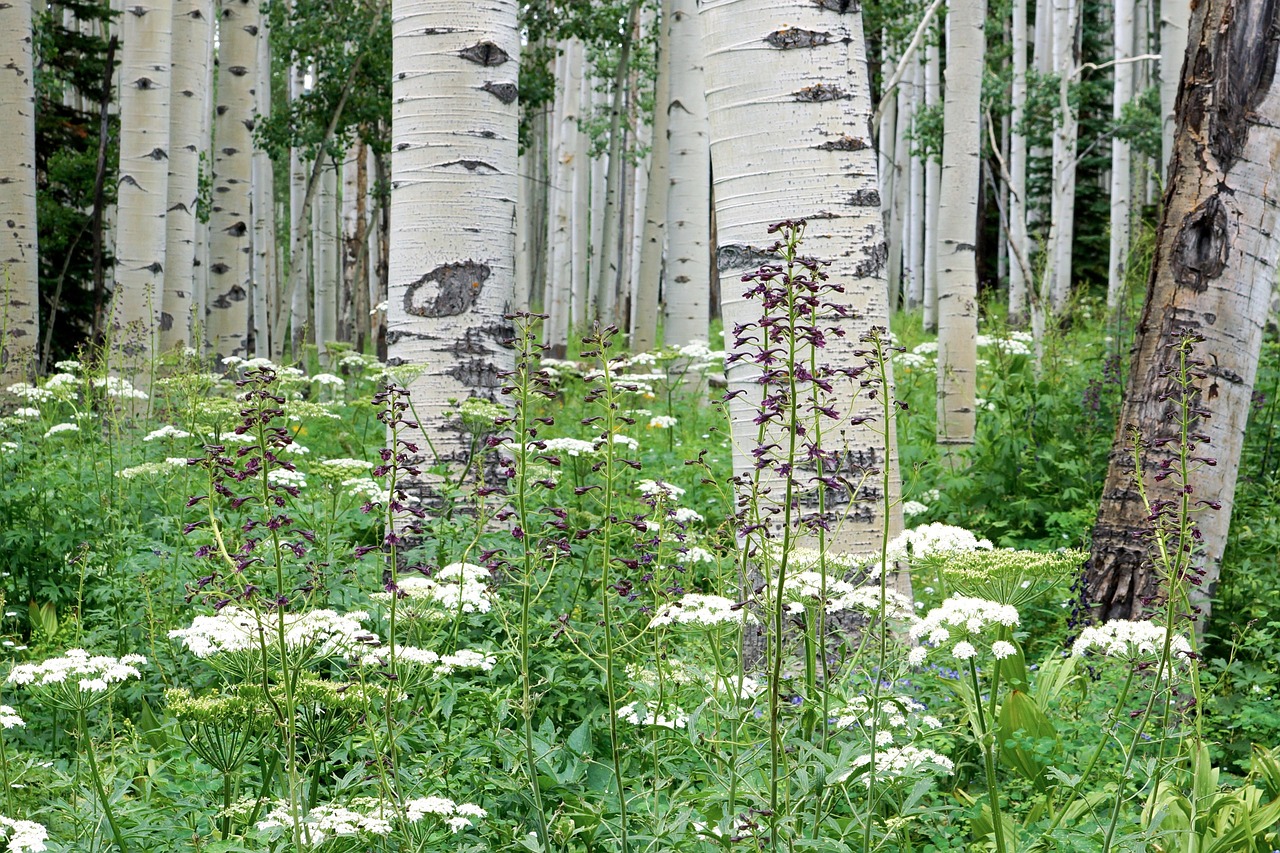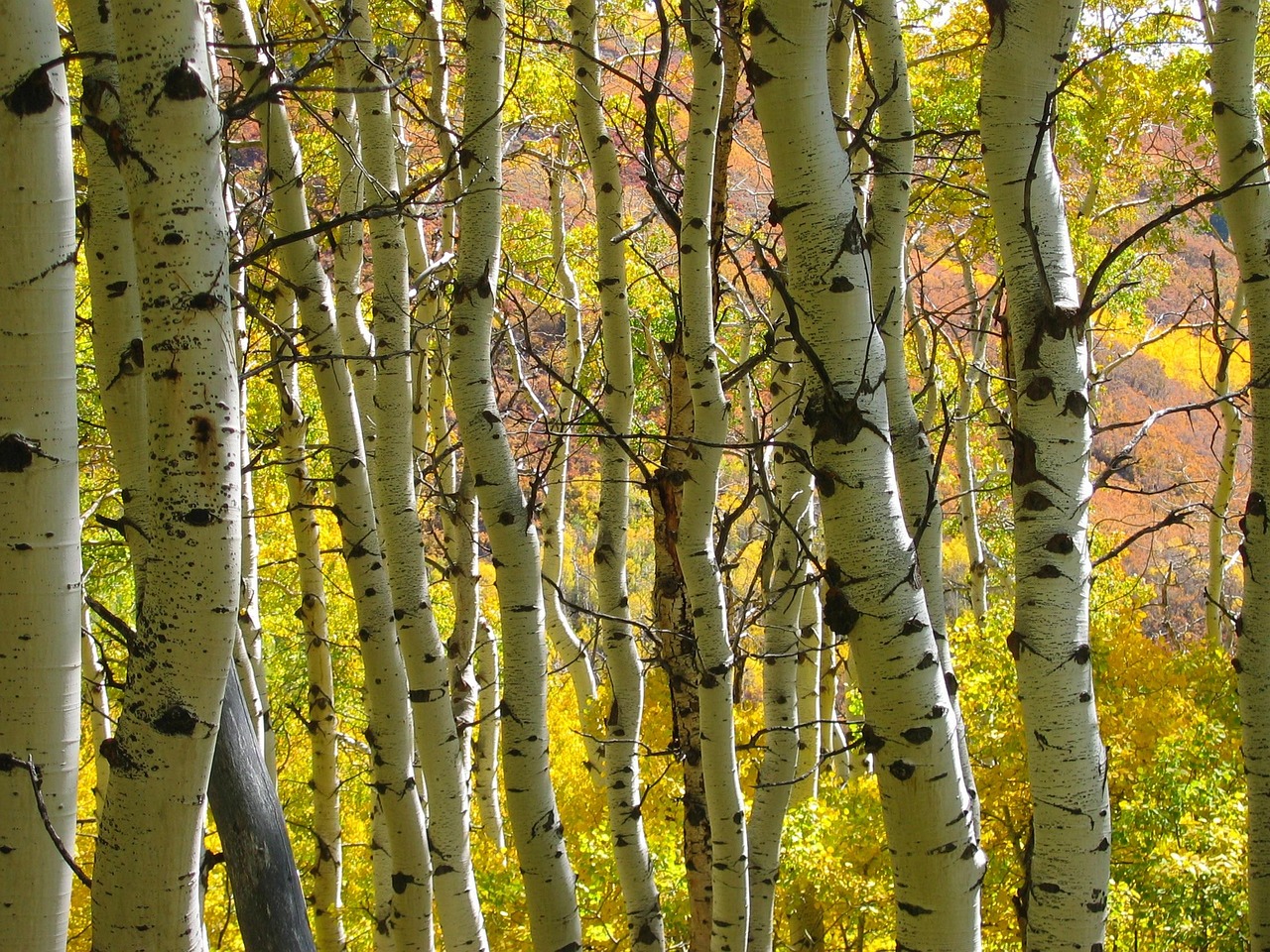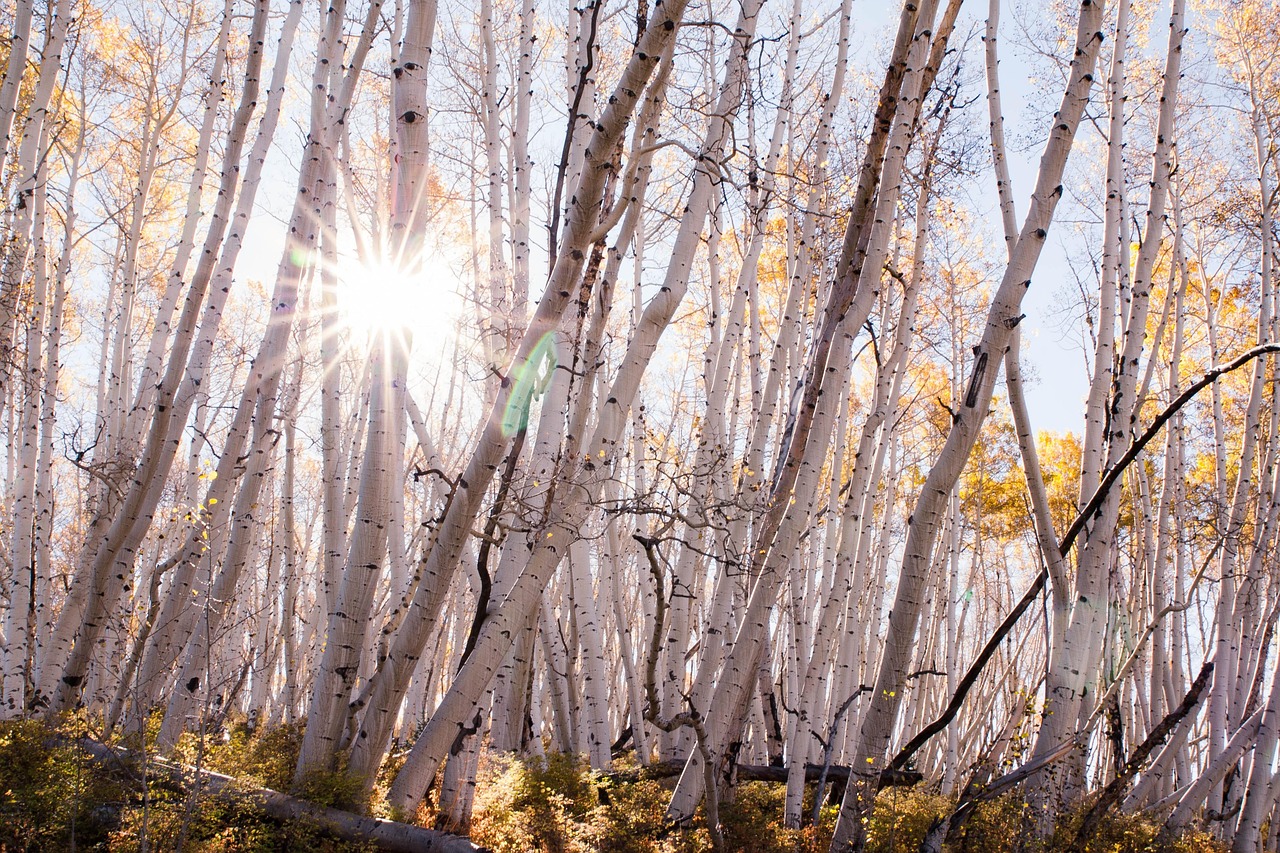Quaking aspens are considered good trees for landscaping due to their striking appearance, vibrant fall colors, and ability to thrive in various environments. They also provide excellent shade and can enhance biodiversity in gardens.
Introduction to Quaking Aspen

Quaking aspen, scientifically known as Populus tremuloides, is a deciduous tree native to North America. It is well-regarded for its beautiful white bark and fluttering leaves that tremble in the breeze, creating a mesmerizing visual effect. These trees are particularly popular in landscaping because they are fast-growing and can adapt to a range of soil types.
One of the most striking features of quaking aspens is their vibrant yellow foliage in the fall. This seasonal change adds a splash of color to any landscape, making them a favorite among homeowners and landscape designers alike. Furthermore, aspens are known for their ability to create stands or groves, as they propagate through root systems, making it possible to establish a stunning natural area with minimal effort.
Characteristics of Quaking Aspen
Quaking aspens possess several characteristics that contribute to their appeal in landscaping. Here are some key features:
- Height: Quaking aspens typically grow between 20 to 50 feet tall.
- Canopy Spread: Their canopy can spread from 10 to 30 feet wide.
- Growth Rate: They are known for their rapid growth, often adding up to 2 feet per year.
- Lifespan: While individual trees may live for 30-50 years, they often regenerate through root systems, creating new trees that can live much longer.
Environmental Benefits
In addition to their aesthetic value, quaking aspens offer numerous environmental benefits. These trees play a significant role in local ecosystems and contribute positively to the environment. Some of the benefits include:
- Habitat Creation: Aspens provide essential habitat for various wildlife species, including birds, mammals, and insects.
- Soil Erosion Control: Their extensive root systems help stabilize soil and prevent erosion.
- Carbon Sequestration: Like all trees, quaking aspens absorb carbon dioxide, helping to mitigate climate change effects.
Growing Conditions
Quaking aspens thrive in a variety of conditions but prefer certain environments. Understanding their growing conditions is vital for successful landscaping. Here are some aspects to consider:
- Soil Type: They grow best in well-drained, moist soils but can tolerate a range of soil conditions.
- Sunlight: These trees prefer full sun but can tolerate partial shade.
- Water Requirements: Regular watering is essential, especially during dry spells.
Pest and Disease Resistance
Quaking aspens are generally resistant to many pests and diseases, making them a resilient choice for landscaping. However, they can be affected by some issues such as:
- Aspen Bark Beetle: This pest can cause damage to the bark.
- Leaf Spot Fungi: These fungi can affect the leaves, particularly in humid conditions.
- Powdery Mildew: This fungal disease can occur but is usually manageable with proper care.
The resilience of quaking aspens makes them suitable for many landscaping projects, providing beauty and functionality in outdoor spaces. Their adaptability and benefits further solidify their status as excellent choices for diverse landscapes.
Landscaping Uses of Quaking Aspen
Quaking aspens are versatile trees that can enhance various landscaping designs. Their unique appearance and beneficial qualities make them suitable for a range of uses. Here are some common landscaping applications for quaking aspens:
- Shade Trees: Due to their broad canopy, quaking aspens provide ample shade, making them ideal for parks, yards, and outdoor gathering spaces.
- Windbreaks: Planting aspens in rows can create effective windbreaks, protecting gardens and homes from harsh winds.
- Wildlife Sanctuaries: Aspens attract birds and other wildlife, making them excellent additions to natural areas aimed at promoting biodiversity.
- Mixed-Tree Groves: They can be combined with other tree species to create diverse groves that offer visual interest throughout the year.
Design Considerations
When incorporating quaking aspens into landscaping, several design considerations should be taken into account. Proper planning ensures that these trees thrive and enhance the overall aesthetic of the area.
- Spacing: Quaking aspens can grow close together due to their ability to send up new shoots from roots. However, it is essential to allow for adequate spacing to prevent overcrowding and ensure optimal growth.
- Soil Preparation: Preparing the soil before planting is crucial. Ensure the soil is well-draining and enriched with organic matter to promote healthy root development.
- Sunlight Exposure: While they prefer full sun, partially shaded areas are acceptable. Assess the sunlight conditions of your landscape before planting.
- Water Accessibility: Regular watering is vital, especially during the initial establishment phase. Consider installing a drip irrigation system for efficient water delivery.
Caring for Quaking Aspen
Caring for quaking aspens involves managing their health and ensuring they remain robust throughout their lifespan. Here are some care tips:
Watering and Mulching
Proper watering and mulching can significantly affect the health of quaking aspens. Follow these guidelines:
- Watering Schedule: Water newly planted aspens deeply once a week during dry periods. After establishment, they may require less frequent watering.
- Mulching: Apply organic mulch around the base of the tree to retain moisture, regulate soil temperature, and suppress weeds.
Pruning
Regular pruning helps maintain the shape and health of quaking aspens. Consider these pruning practices:
- Timing: Prune in late winter or early spring before new growth begins.
- Removal of Dead or Diseased Branches: Regularly check for and remove any dead or diseased branches to promote better airflow and reduce disease risk.
- Crown Thinning: Thinning the crown helps improve light penetration and air circulation within the tree.
Potential Challenges

While quaking aspens have many advantages, they can present some challenges in landscaping. Awareness of these challenges will help in managing them effectively.
- Root System: Their extensive root systems can spread widely, potentially interfering with nearby plants or structures. Consider this when selecting planting locations.
- Suckering Behavior: Quaking aspens often produce multiple shoots from their root systems, which can create a dense thicket if not managed properly.
- Pest Management: Although generally resistant, regular monitoring for pests is essential. Implementing integrated pest management strategies can help maintain tree health.
Understanding these aspects of caring for and utilizing quaking aspens will help ensure they thrive in landscaping projects while providing beauty and ecological benefits for years to come.

Quaking Aspen in Different Landscape Styles
Quaking aspens can be effectively integrated into various landscape styles, enhancing the overall design and functionality of outdoor spaces. Their unique characteristics make them suitable for different aesthetics and purposes. Below are some popular landscape styles where quaking aspens excel:
Naturalistic Landscapes
Naturalistic landscapes aim to create a harmonious blend between the built environment and nature. Quaking aspens fit perfectly into this style due to their native status and ability to attract wildlife. Here are some considerations:
- Group Planting: Planting groups of quaking aspens mimics their natural groves, creating a lush and inviting atmosphere.
- Wildflower Integration: Combine aspens with native wildflowers to enhance biodiversity and provide seasonal color.
- Natural Pathways: Use aspens to line meandering pathways, creating a scenic route that invites exploration.
Contemporary Landscapes
In contemporary designs, quaking aspens can add an element of elegance and modern appeal. Their striking white bark contrasts beautifully with minimalist features. Consider these ideas:
- Feature Tree: Use a single, well-placed aspen as a focal point in a minimalist garden.
- Geometric Layouts: Incorporate aspens in geometric patterns or as part of structured garden beds to create visual interest.
- Water Features: Pair aspens with water features like ponds or fountains to enhance tranquility and aesthetics.
Functional Landscapes
For functional landscapes, such as residential yards or commercial properties, quaking aspens can serve practical purposes while providing beauty. Here are some uses:
- Shade for Patios: Position quaking aspens strategically to provide shade for outdoor seating areas, improving comfort during hot weather.
- Noise Reduction: Planting aspens along property boundaries can help reduce noise pollution from nearby roads or urban areas.
- Erosion Control: Their root systems stabilize soil, making them ideal for planting on slopes or areas prone to erosion.
Seasonal Interest with Quaking Aspen
Quaking aspens offer seasonal interest throughout the year, making them captivating additions to any landscape. Each season brings distinct beauty and character:
Spring
In spring, quaking aspens produce bright green leaves that emerge after winter dormancy. This fresh foliage signals the start of new growth and revitalizes the landscape.
Summer
During summer, the dense canopy provides ample shade, making outdoor areas cooler. The rustling leaves create a pleasant sound, enhancing the tranquility of gardens and parks.
Autumn
Fall is when quaking aspens truly shine, showcasing brilliant yellow foliage that transforms landscapes into vibrant displays of color. This seasonal change attracts attention and admiration from onlookers.
Winter
In winter, the stark white bark stands out against the snow, creating striking visual contrasts. The bare branches reveal the tree’s elegant structure, adding interest even in the coldest months.
Cultural Significance of Quaking Aspen
Beyond their aesthetic and ecological benefits, quaking aspens hold cultural significance for many communities. They are often associated with symbolism and tradition:
- Cultural Symbolism: In Native American cultures, aspens are seen as symbols of resilience and strength due to their ability to thrive in diverse environments.
- Folklore and Storytelling: Many stories and legends revolve around quaking aspens, often linked to themes of transformation and renewal.
- Aesthetic Inspiration: Artists and writers have drawn inspiration from the beauty of quaking aspens, capturing their essence in various forms of creative expression.
The combination of natural beauty, ecological benefits, and cultural significance makes quaking aspens valuable additions to landscapes across many contexts. Understanding these aspects can enhance landscaping decisions and promote a deeper appreciation for these remarkable trees.
Environmental Impact of Quaking Aspen
Quaking aspens play a vital role in their ecosystems, contributing to both environmental health and stability. Understanding their impact can further underscore their value in landscaping. Some notable environmental benefits include:
- Soil Health: The root systems of quaking aspens help improve soil structure and health by preventing erosion and promoting nutrient cycling.
- Water Conservation: Their dense foliage reduces water runoff, allowing for better water absorption in the surrounding soil.
- Biodiversity Enhancement: Quaking aspens provide habitats for various wildlife species, including birds, mammals, and insects, thus supporting biodiversity.
- Climate Regulation: By absorbing carbon dioxide, these trees contribute to climate change mitigation efforts, making them essential in combating global warming.
Quaking Aspen Varieties and Cultivars
There are several varieties and cultivars of quaking aspen that can be selected based on specific landscaping needs. Some popular options include:
- Common Aspen (Populus tremuloides): This is the native species known for its striking white bark and fluttering leaves.
- Golden Aspen (Populus tremuloides ‘Aurea’): This cultivar features brilliant golden-yellow foliage in the fall, adding extra color to landscapes.
- Dwarf Aspen (Populus tremuloides ‘Burgundy’): This smaller variety is ideal for compact spaces while still providing the characteristic beauty of aspens.
Selecting the right variety can enhance the overall design and functionality of landscaping projects, ensuring they meet specific aesthetic and environmental goals.
Integration with Other Plants

To create a diverse landscape that complements quaking aspens, pairing them with other plant species is beneficial. Here are some suggestions for companion plants:
- Wildflowers: Native wildflowers such as coneflowers and black-eyed Susans can thrive in the same conditions as quaking aspens, adding color and attracting pollinators.
- Shrubs: Planting shrubs like serviceberry or chokecherry nearby can provide additional habitat for wildlife and enhance the visual appeal of the landscape.
- Groundcovers: Low-growing groundcovers such as creeping thyme or sedum can help suppress weeds and retain moisture around the base of aspens.
This plant diversity not only enhances beauty but also promotes ecological balance within the landscape.
Final Thoughts
Quaking aspens are exceptional trees that offer a wealth of benefits for landscaping. Their stunning appearance, rapid growth, and environmental contributions make them a favorite among landscape designers and homeowners alike. The ability to adapt to various soil types and conditions further solidifies their status as versatile landscaping options.
The cultural significance of quaking aspens adds depth to their appreciation. As symbols of resilience and strength, they inspire creativity and reflection in various artistic forms. The seasonal changes they undergo provide ongoing interest, ensuring they remain captivating throughout the year.
When considering quaking aspens for landscaping, understanding their unique characteristics, care requirements, and potential challenges will enable effective planning and management. By integrating these trees thoughtfully into designs and combining them with complementary plants, one can create a beautiful, functional outdoor space that celebrates both nature and design.
Ultimately, quaking aspens stand as a testament to the beauty and resilience of nature, making them not just good trees for landscaping but also valuable contributors to environmental health and cultural heritage.
